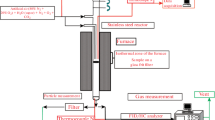Abstract
Taguchi parameter design is an efficient and effective method for evaluating and optimizing parameters for a given process. This article describes a study involving the use of Taguchi parameter design for the evaluation of pressure measurement devices used on fuel nozzle test stands. This study examines and compares the performance of a digital display pressure transducer device and a mechanical analog pressure gage, under various parameter levels and configurations. Both an inner and outer orthogonal array are used to quantify control factor variability within the pressure gage calibration and measurement process, given two noise factors. Control factors include two types of dead weight testers, two types of pressure measurement devices, and three set pressures. Two noise factors utilized here were two different operators and the change in direction of the pressure before measurement (upward or downward). Collected data are used to determine the optimal levels of three quality characteristics: pressure difference, settling time, and hysteresis. Taguchi parameter design analysis of signal-to-noise ratio (S/N ratio) found an optimal test stand configuration included a pressure transducer with digital display with any combination of the other control factors, although with some sacrifice of response time. Verification of this selected configuration was conducted through linearity studies.
Similar content being viewed by others
References
Flott LW (1996) What hath Detroit wrought? Met Finish 94:121–123
Pivka M, Mulej M (2004) Requisitely holistic ISO 9000 audit leads to continuous innovation/improvement. Cybernet Syst 35(4):363–378
Hafeez A Auditors, be the best. Mater World 14(4):36–37
Andersson R, Eriksson H, Torstensson H (2006) Similarities and differences between TQM, six sigma and lean. TQM Magazine 18(3):282–296
Savastano D (2003) In search of continuous improvement. Ink World 9(1):24–32
Zhong J, Wang Y, Webber R, Gupta K (1995) Advances in pressure gauge calibration systems: your key to ISO certification. Advanced Pressure Products Available online at http://www.pmiapp.com/APP_Web_Old/cutedge/a_cut_advanpgcs.html
International Organization for Standardization (ISO) (1995) Guide to the expression of uncertainty in measurement. Geneva, Switzerland
Taylor BN, Kuyatt CE (1994) NIST Technical Note 1297: guidelines for evaluating and expressing the uncertainty of NIST measurement results. National Institute of Standards and Technology, Gaithersburg, MD
United States Department of Energy Sandia National Laboratories (1996) Process Measurement Assurance Program: a report by R. B. Pettit (Sandia Report SAND96-1241). Sandia National Laboratories, Albuquerque, NM
Zeccardi JJ (1988) Inspection and test. In: Juran JM, Gryna FM (eds). Juran’s quality control handbook. McGraw-Hill, New York, NY, pp 18.63–18.68
National Research Council Canada Institute for National Measurement Standards (2006) Calibration Services. Available online at http://inms-ienm.nrc-cnrc.gc.ca/en/calserv/calibration_services_e.php
Jones FE (1995) Effect of kinematic viscosity on the performance of turbine flow meters-solution to the problem. In Proc 1995 NCSL Workshop and Symposium Dallas, TX, pp 379–389
Olivier PD (1995) Determination of turbine meter usable turndown. In Proc 1995 NCSL Workshop and Symposium Dallas, TX, pp 739–745
Singh AP, Kumar S, Kamal TS (2004) Fitting transducer characteristics to measured data using a virtual curve tracer. Sensor Actuat A-Phys 111(2–3):145–153
Bush LB, Unal R, Rowel LF, Rehder JJ (1992) Weight optimization of an aerobrake structural concept for a lunar transfer vehicle (NASA Report No. NASA TP-3262). National Aerospace and Space Administration, Washington, DC
Case J (1998) Taguchi methods for engineering design. Available online at http://www.menet.umn.edu/~case0048/quality
Fowlkes WY, Creveling CM (1995) Engineering methods for robust product design: using Taguchi methods in technology and product development. Addison-Wesley, Reading, MA
Derimiggio J (1995) WinRobust (Version 1.02) [computer software]. Addison-Wesley, Reading, MA
Rosemount, Inc (1998) Model 3051 smart pressure transmitter family [product manual]. Rosemount, Chanhassen, MN
Roy, RK (2001). Design of experiments using the Taguchi Approach: 16 steps to product and process improvement. John Wiley & Sons, Inc., New York
Everhart, JL (1997) Developing a process measurement assurance program (PMAP™). Cal Lab: The International Journal of Metrology January/February:22–28
Author information
Authors and Affiliations
Corresponding author
Rights and permissions
About this article
Cite this article
Chen, J., Kirby, E.D. & Zellmer, J.A. Evaluating performance of a fuel nozzle test stand under varying configurations using Taguchi parameter design - An industrial application. Int J Adv Manuf Technol 38, 205–217 (2008). https://doi.org/10.1007/s00170-007-1090-0
Received:
Accepted:
Published:
Issue Date:
DOI: https://doi.org/10.1007/s00170-007-1090-0




